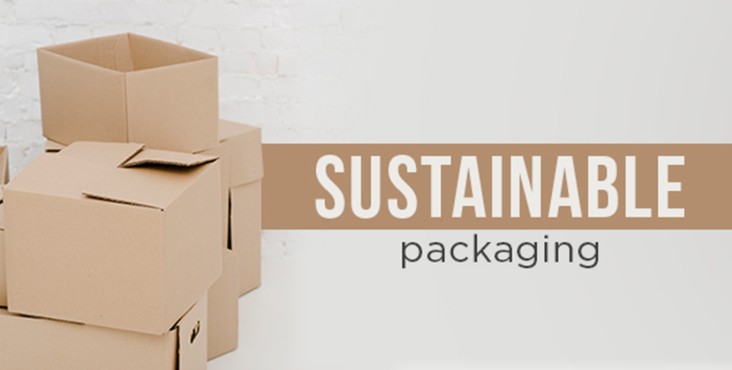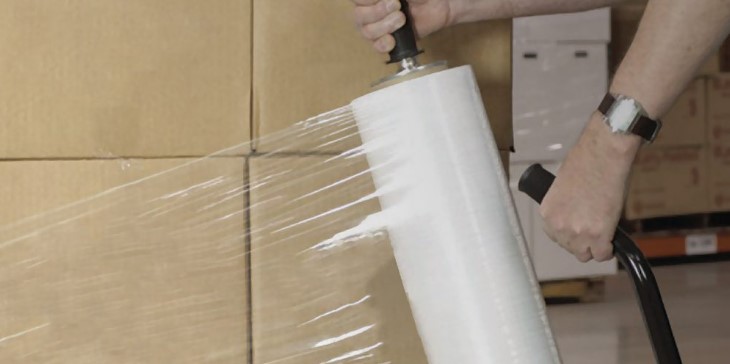Walk into any warehouse or shipping dock, and you’ll spot it. A thin, clear wrap, tightly hugging boxes on a pallet. This is stretch film—one of the most reliable materials in modern packaging.
Though it may look simple, stretch film solves many complex problems. It secures goods, lowers shipping damage, reduces waste, and helps companies pack faster. This guide explains why stretch film is effective and how it contributes to a smarter, cleaner future.
Understanding Stretch Film and How It Works
Stretch film is a plastic wrap designed to stretch and cling around items. You apply it by hand or with a machine. It grips tightly to itself, forming a solid wrap that holds everything in place.
Warehouses use it to bundle cartons, seal pallets, or group loose goods. It protects against dirt, water, and tampering. Once wrapped, items stay still during storage or transit.
The film stretches to nearly twice its length and then pulls back. This tension creates a firm hold that keeps items from shifting. It acts like a flexible rope, only thinner, lighter, and much easier to use.
Why Stretch Film Stands Out in Packaging?
Many materials protect goods. Boxes cushion. Straps bind. But stretch film brings a mix of benefits that few others can match.
1. Holds Goods Tightly Without Glue or Tape
- The film sticks to itself, not the product. That means no sticky residue or damage to labels and boxes.
2. Keeps Loads Stable
- Wrapped goods on trucks, ships, or forklifts resist slipping and toppling, reducing the risk of breakage or loss.
3. Saves Time and Effort
- Workers can wrap a pallet in minutes. Machines do it even faster.
4. Protects from Dust and Moisture
- Once sealed, the film forms a barrier against dirt, water, and even pests.
5. Uses Less Material
- Compared to boxes or crates, stretch film weighs less and takes up less space.
Where Stretch Film Makes the Biggest Impact
Stretch film shines in many places—from global factories to small local shops.
- Warehouses: For wrapping pallets quickly
- Retail Stores: For bundling products during stock transfers
- Moving Services: For securing furniture or odd-shaped items
- Manufacturing Plants: For holding tools, parts, or loose units together
- E-commerce Fulfilment: For final-mile delivery protection
Common Uses of Stretch Film Across Industries
Before choosing a packaging method, it helps to see how stretch film serves different sectors.
Industry | Stretch Film Application | Key Benefit |
Logistics & Shipping | Pallet wrapping | Load stability and speed |
Retail | Bundle small products or loose stock | Reduces item loss during transfer |
Manufacturing | Wrap tools or machine parts | Keeps items sorted and protected |
Food Distribution | Wrap boxes or trays of goods | Clean, safe transit |
Furniture Moving | Seal drawers or soft parts | Prevents damage and shifting |
Stretch Film and Your Earth-Friendly Goals
More and more, people hunt for cleaner ways to pack things. Stretch film helps! Even though some folks worry about plastic, this film wins in many ways.
1. Makes Less Trash Each Time
- Stretch film looks thin but holds tight. It uses way less stuff than big boxes or squishy foam.
2. Gives You Film You Can Recycle
- Many stretch films now spring from old plastic or show clear recycle signs. Some even break down in dirt over time!
3. Shrinks the Shipping Weight
- Since it’s light, trucks carry more with less fuel. That helps the air stay cleaner.
4. Guards Against Breaks
- When things don’t break, we don’t send them back. That saves time, tape, and trash. This film also blocks water and dirt.
Utilise stretch film efficiently to save more by using less.
How Do You Use Stretch Film the Right Way?
Stretch film works great—but only if you use it the right way. These tips help:
1. Pick the Right Kind
- Thick film fights off rips but can feel hard to pull. Thin film bends better and fits light stuff.
2. Pull With the Same Tug
- If you yank too hard, it tears. If you barely tug, stuff slides. Use steady hands to wrap just right.
3. Begin at the Bottom
- Start at the base of the stack. Spin the roll around and let each line cover half of the last one.
4. Tuck the Last Bit
- Stick the final strip to the roll or twist it so it holds tight.
Hand Wrap or Machine Wrap?
You can wrap it in two cool ways:
1. Use Your Hands
- Great for small jobs or weird shapes. You grab the roll and walk all around the boxes. It works but may feel slow.
2. Let a Machine Do It
- Big places use machines. They zoom around the pallet and stretch the film just right. Machines cost more but save time and film.
Hand Wrap vs. Machine Wrap
This table shows which method suits your needs best.
Feature | Hand Wrap | Machine Wrap |
Speed | Slower | Fast and steady |
Consistency | Depends on user | High consistency |
Cost to Start | Low | High initial setup |
Flexibility | Good for small jobs | Best for large-scale wrapping |
Film Stretch Ratio | Lower | Higher (saves more film) |
Types of Stretch Film
Stretch films come in many types. Each item serves a specific purpose. These films hug, conceal, or protect items during packing or moving.
1. Blown Stretch Film
Makers puff air into hot resin to shape this film. It clings hard, feels strong, and handles heavy boxes or sharp parts without tearing.
2. Cast Stretch Film
This one spreads smooth and flat. It shows what’s inside, stays quiet when pulled, and fits well for store use or neat packing.
3. Coloured or Opaque Film
Use this to cover what you pack or to mark items with bright colours so people sort them quickly.
4. Ventilated Film
This film pokes holes through itself so air flows in and out. It helps fruits, food, or plants stay fresh while wrapped.

Challenges of Using Stretch Film
No solution is perfect. While stretch film solves many problems, users must manage these limits:
- Not Biodegradable: Most stretch films don’t break down on their own
- Needs Careful Disposal: Recycling options vary by region
- May Tear on Sharp Corners: Use edge protectors when needed
- Improper Use Wastes Film: Poor wrapping techniques lead to more plastic use
To reduce these issues, choose quality film, train users well, and recycle wherever possible.
Future of Stretch Film in Packaging
Research continues to improve the stretch film. New forms aim to use:
- Plant-based materials
- Lower-carbon production methods
- Enhanced stretch ratios to reduce use per load
These innovations move stretch film closer to eco-friendly standards while keeping its core strengths.
How to Choose the Best Stretch Film for Your Needs?
Before buying, ask:
- What weight or type of load will you wrap?
- Do you need hand wrap or machine wrap?
- Will the items face weather or long travel?
- Do you need clear, coloured, or printed film?
Answering these helps match the film to your exact task, reducing waste and boosting efficiency.
Final Thoughts
In a world filled with complex packaging systems, stretch film is notable for its simplicity. It clings, protects, and functions effectively.
Despite being a thin sheet of plastic, it guards millions of goods every day. It prevents spills, blocks damage, and speeds up loading lines. When used wisely, it contributes to sustainable packaging by reducing waste while also protecting products.
So next time you see a pallet neatly wrapped and ready to ship, remember what holds it all together: not glue, not rope, but stretch film—a small tool with a big impact.
Also Check: Types of Bubble Wrap Available in Singapore and Their Uses
Name: Pack everything
Address: 1 Ubi View, Focus One, #01–05 Singapore Postal Code 408555
Contact: +65 68447616
Google Maps: https://maps.app.goo.gl/YKiCSN4Q9dceZM4o9
